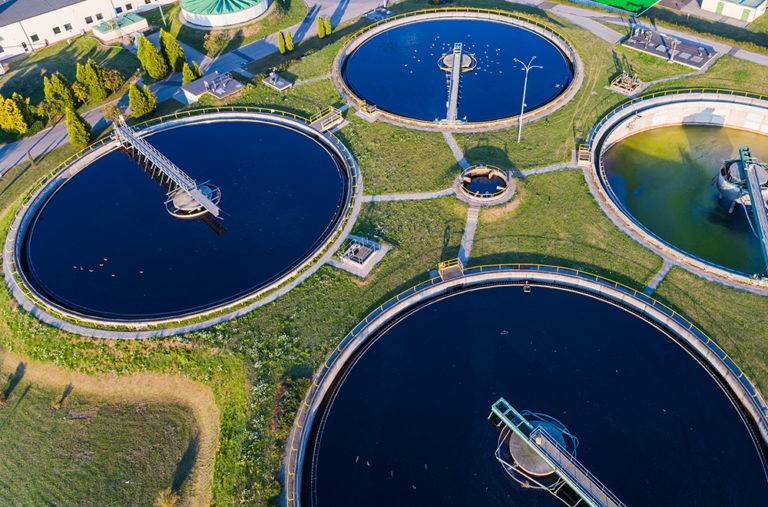You may be tracking evolving regulations from United States Environmental Protection Agency (EPA) regarding per- and polyfluoroalkyl substances (PFAS) to assess how they could impact your compliance obligations. If you are, you’ll be interested in learning about recent EPA activities that increase focus on potential PFAS concerns. EPA’s additional attention may add to your regulatory requirements or warrant an expedited evaluation of your potential PFAS liability.
Recently, EPA Administrator Michael Regan made clear that the agency will increase its focus on regulating PFAS. In addition, EPA has revised its toxicity assessment for a key PFAS compound used in a variety of consumer products and provided advance notice about a potential upcoming rule change to wastewater discharge requirements. EPA’s actions may have consequences for sites with PFAS in air, soil, and groundwater.
New EPA council on PFAS

Regan stated in his memorandum from April 27, 2021 that PFAS, “will be one of my top priorities.” He further expressed support for the American Jobs Plan, which calls for investing billions of dollars to monitor and treat PFAS in drinking water. Additionally, he requested that select EPA administrators convene and lead an EPA Council on PFAS (ECP) to strategize the best ways “to mitigate and reduce PFAS pollution.” The ECP will:
- Develop a multi-year strategy for PFAS by reviewing ongoing EPA actions and proposing modifications and new priorities. The ECP will make its initial recommendations 100 days after it is established.
- Continue close interagency coordination on significant and complex PFAS challenges.
- Work with national program offices to support cleanup of PFAS.
- Expand engagement with federal, state, and tribal partners for consistent communication and exchange of information.
EPA releases updated PFBS toxicity assessment

On April 8, 2021, EPA announced the release of the final Human Health Toxicity Values for Perfluorobutane Sulfonic Acid (PFBS) (CASRN 375-73-5) and Related Compound Potassium Perfluorobutane Sulfonate (CASRN 29420-49-3). PFBS is a substance among the larger group of PFAS that has been used as a surfactant in industrial processes and in water and stain-resistant coatings on carpets, fabrics, and paper. As part of this work, EPA developed chronic and subchronic oral reference doses (RfDs) for PFBS. A reference dose estimates the amount of a substance a person can typically ingest daily over a lifetime (chronic) or less (subchronic) without experiencing adverse health effects. These values for PFBS are as follows:
| Chemical | Subchronic RfD | Chronic RfD |
| PFBS | 0.001 mg/kg-day | 0.0003 mg/kg-day |
The RfDs for PFBS indicate it is less toxic than two other substances in this group of PFAS, PFOA and PFOS, for which EPA has developed RfDs:
| Chemical | Chronic RfD (mg/kg-day) |
| PFBS | 0.0003 |
| PFOA | 0.00002 |
| PFOS | 0.00002 |
In his April 27 memorandum, Regan notes that EPA “pulled down a PFBS toxicity assessment that had been politically compromised and issued a new assessment backed by career scientists.”
EPA takes actions to address PFAS in wastewater
On March 17, 2021, EPA issued an advance notice of proposed rulemaking (ANPRM) titled Clean Water Act Effluent Limitations Guidelines and Standards for the Organic Chemicals, Plastics and Synthetic Fibers (OCPSF) Point Source Category to address PFAS discharges from PFAS manufacturers (who produce PFAS or precursors) and PFAS formulators (who use PFAS to produce goods) that fall under the OCPSF point source category. This ANPRM provides information for public review and comment and data regarding PFAS manufacturers and formulators that EPA has collected to date. EPA is also soliciting additional information and data regarding discharge of PFAS from these facilities. EPA will use these data to inform future revisions to the wastewater discharge requirements that apply to the OCPSF point source category.
On November 22, 2020, EPA published recommendations on the Clean Water Act Section 402 National Pollutant Discharge Elimination System (NPDES) permits to include interim requirements that address point source discharges of PFAS. EPA recommends that NPDES permits include requirements for PFAS monitoring provisions (after EPA’s multi-lab validated methods are made available to the public in 2021) and best management practices that control or abate PFAS in point source wastewater discharges. NPDES permits will require PFAS monitoring and stormwater pollutant control to address PFAS in stormwater discharges.

These interim requirements would impact facilities that discharge wastewater and/or stormwater in locations where EPA is the NPDES permitting authority: Massachusetts, New Hampshire, New Mexico, the District of Columbia, most U.S. territories, and certain federal facilities. However, other states may follow EPA guidelines for similar requirements in state-issued NPDES permits.
With EPA’s focus on PFAS, an entity that has processed PFAS during their lifecycle (from manufacturing to disposal and beyond) can start developing assessment plans to better understand and limit its environmental liabilities. Haley & Aldrich is on the forefront of addressing potential liabilities related to PFAS. Please contact any the authors below for further information or to discuss your specific concerns.
Published: 6/1/2021
- Aerospace
- Government infrastructure
- Airports
- Consumer products
- Industrial and manufacturing
- Manufacturing
- Contaminated site management
- Emerging contaminants
- PFAS
- EHS compliance
- EHS strategy and management
- Water resources
- Stormwater
Authors

Principal Consultant, Applied Research Leader

Principal Consultant




